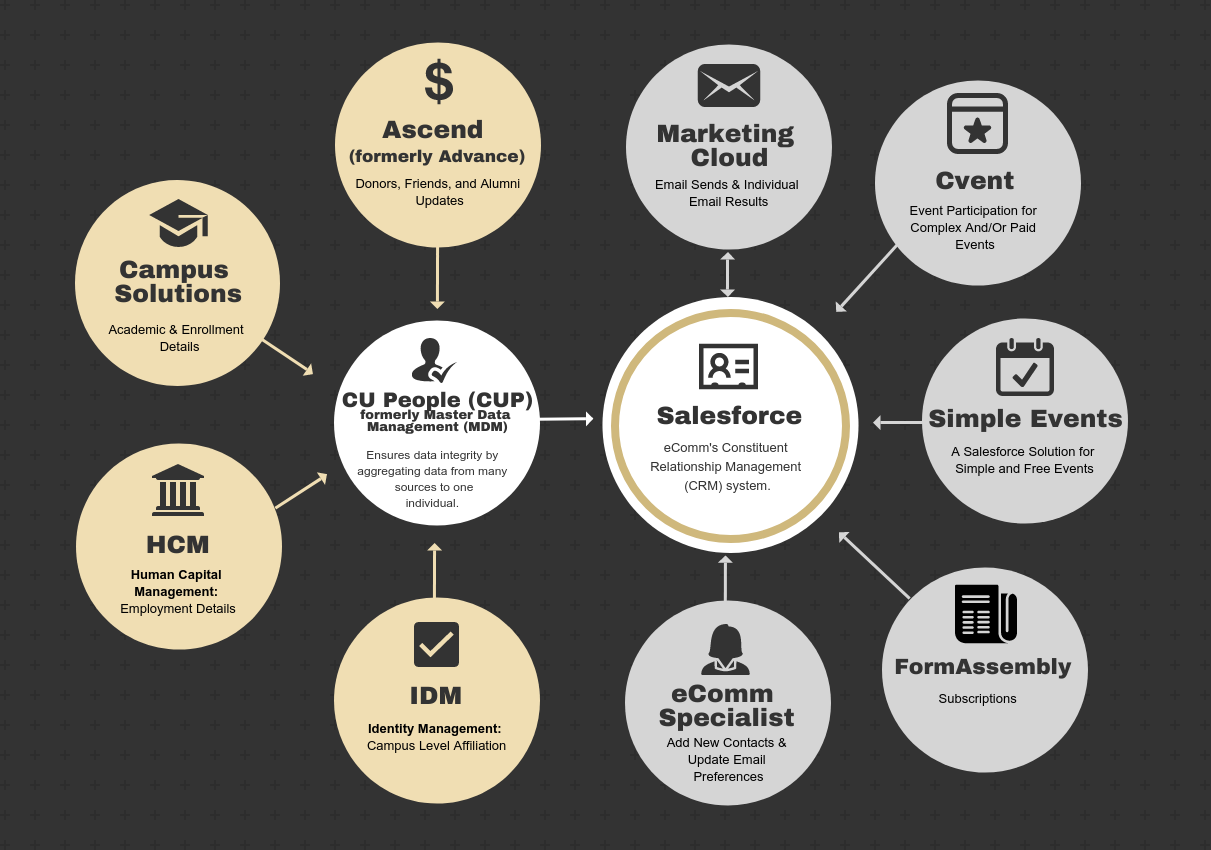Salesforce is at the heart of eComm, but it would be nothing without other systems across CU. Most of eComm's Salesforce Contacts are from a source system (updated nightly) and enhanced with engagement information from eComm's other applications (Marketing Cloud & Cvent), constituents and eComm specialists.

eComm's constituents are comprised of data from multiple systems (listed below). CU People (CUP) - formerly Master Data Management (MDM) - aggregates these details on one record and then passes it to Salesforce for use.
- Advance | Donors, Friends & Alumni Updates
- Campus Solutions | Academic & Enrollment Details
- Human Capital Management (HCM) | CU Employment Details
- Identity Management (IDM) | Campus-level Affiliations
- eComm Specialist | Contacts that do not exist in one of the above data systems can be created directly in Salesforce by an eComm specialist
Once a contact is created in Salesforce, there are a few ways the contact's information gets updated and enhanced:
- Marketing Cloud | Enhances a Contact by layering on individual email preferences and Individual Email Results (IERs).
- Marketing Cloud and Salesforce have a bi-directional integration meaning a Marketing Cloud email can be distributed to a targetted audience created in Salesforce and data from that email is sent back to Salesforce.
- Cvent | Enhances a Contact by adding event participation (and creates new Contacts when necessary). Cvent supports complex and/or paid events.
- Simple Events | Offers a Salesforce solution for collecting registrations at a low cost - only for simple and free events.
- Form Assembly | Enhances a Contact by including any action taken to subscribe (and creates new Contacts when necessary).
- eComm Specialists | Update a constituent's Email Preferences
- Constituents can adjust their Email Preferences by receiving an email and selecting 'Manage My Preferences' in the footer
- Advance, Campus Solutions & HCM | Updates constituent's First Name, Last Name, or Email (depending on which source system the Contact originated from)
Data Dictionary & Entity Relationship Diagram (ERD)
The data dictionary provides full descriptions and values of fields that exist in Salesforce while the Entity Relationship Diagram (ERD) indicates how the data is related to one another.




